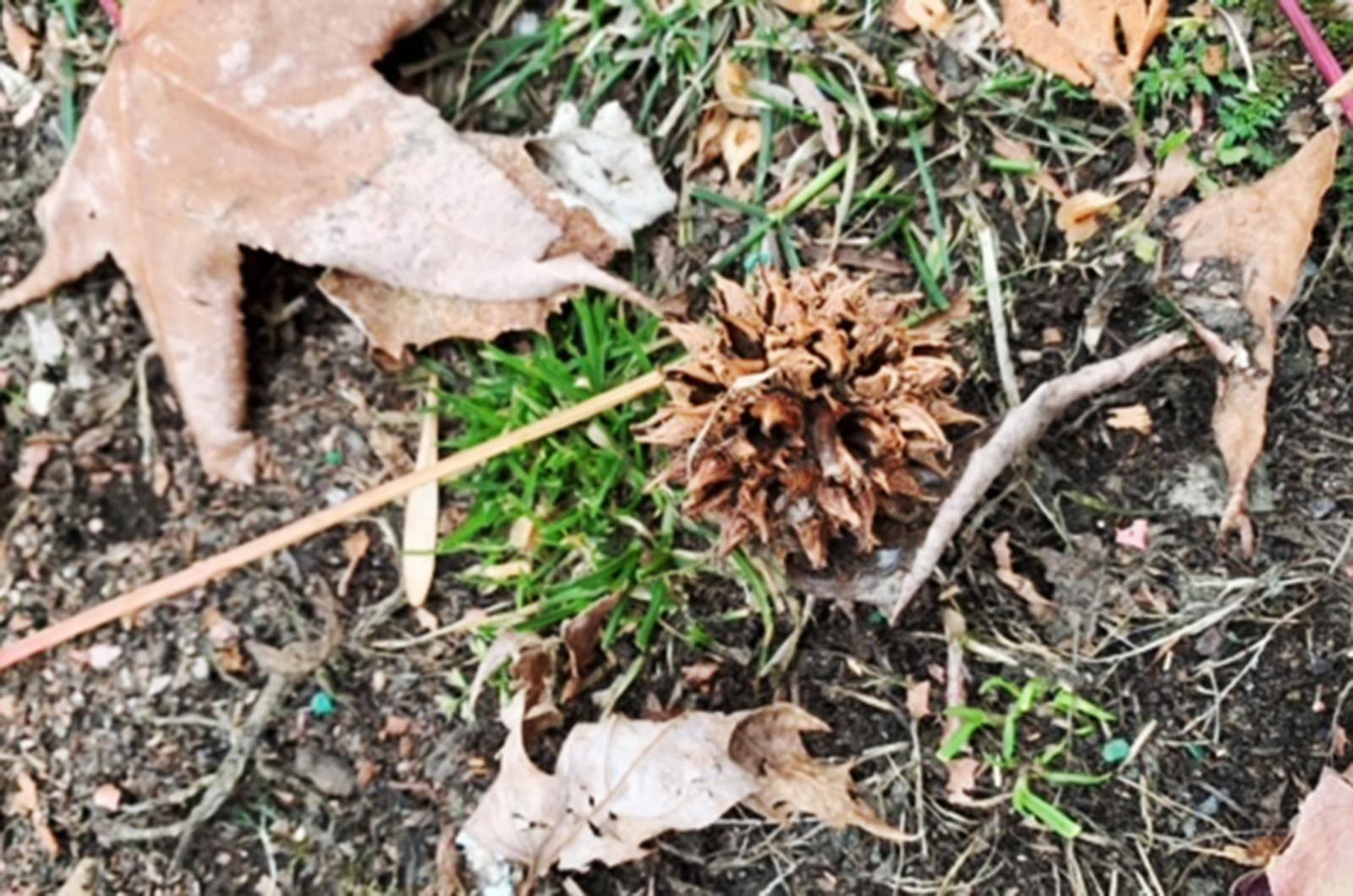Even if you are not a golf pro, baseball, or soccer player, you may need to keep your eye on the ball.
Those with sweetgum trees must also be eagle-eyed and look for the spheres to avoid the spiky fruits of this species. If this tree could keep its balls in the air, there would be no problem. However, its inevitable ball drop — not the festive Times Square on New Year’s Eve type — makes a walk or run among them a potentially ankle-spraining, fall-inducing, death-defying obstacle course.
These balls, also called burr or birr balls, gum balls, space bugs, spike balls, monkey balls, goblin balls and sticker balls, hold the seeds of the trees. These seeds are happily eaten by birds — including sparrows, chickadees, nuthatches and finches — and chipmunks and squirrels. The tree is also important to the luna moth, which can use it as a larval plant for its caterpillars.
Sweetgum has been adored and despised by people: it has been called the most dangerous tree in the suburbs and the most valuable tree in the south.
While more prevalent in the southern U.S., this plant’s natural range can extend to Massachusetts. It has been recommended for plantings in yards, neighborhoods and cityscapes, and along roadsides as an ornamental tree. Sweetgum is strong and tall, lives long and has beautiful fall foliage: its leaves turn red, orange and purple.
Recently, however, its favored status has been declining because of those prickly seed balls and its robust roots, which can damage sidewalks and structures.
There are not as many sweetgum species on the Island as I saw in my suburban New Jersey neighborhood, but they are here. They can be found in a few places, including the Polly Hill Arboretum. In their online Plant Selection Guide, this tree is designated as Island appropriate, though not an Island native.
While not a quintessential New England tree, in places where sweetgum is more common, it is revered for its wood, sap and attractive star-shaped leaves. It has a place in the hearts and mouths of North and Central Americans.
Sweetgum is also called star-leafed gum, alligator wood, American storax, hazel pine, red gum and satin walnut. The tree’s scientific name is liquidambar styraciflua, which refers to its “liquid amber” sap that is valued for its scent and as a foodstuff. Aztec Emperor Moctezuma shared it with Spanish colonizer Hernando Cortez, adding it to a pipe of tobacco for its flavor that has been more recently described as “balsamic-like.”
This sap was used for a chewing gum and was added medicinally to food and drink. Spanish explorer — or, maybe more accurately, exploiter — Francisco Hernandez pursued it because of its reputation as effective in treating gonorrhea and diphtheria, as a pain reliever, and as an aid for sleep and digestion. More modern practices include employing it in soaps, adhesives and pharmaceuticals.
Further value comes from its wood, which can be used for furniture, plywood, paneling, railroad ties, cigar boxes, crates, flooring, instruments and even chopsticks. Versatile does not even begin to describe this tree, which is appreciated for its fall colors, nitrogen-fixing capacity and improvement of soil health.
Whether you plant this tree, remove it for safety, or remain ambivalent about its presence, ultimately, the ball — prickly or not — is in your court.
Suzan Bellincampi is Islands director for Felix Neck Wildlife Sanctuary in Edgartown and the Nantucket Wildlife Sanctuaries. She is also the author of Martha’s Vineyard: A Field Guide to Island Nature and The Nature of Martha’s Vineyard.




Comments
Comment policy »